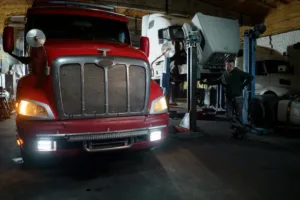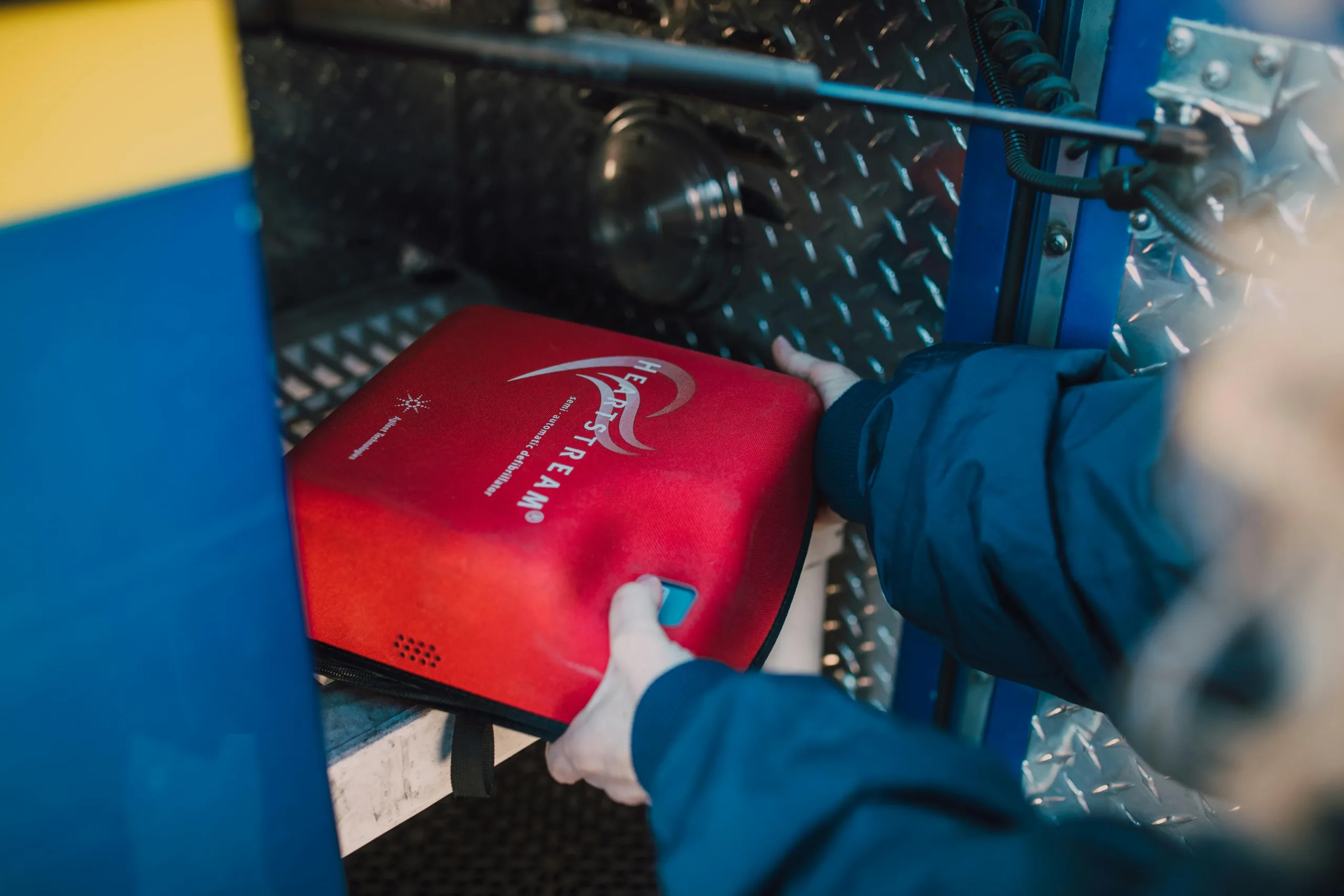From highways to hazardous zones, CDL drivers are trained to expect the unexpected. But when something leaks, bursts, or spills—it’s not just about stopping the truck. It’s about having the right tools in place to clean it up fast, safely, and in compliance with federal rules. That’s where a spill kit becomes essential.
For fleet managers, safety consultants, and CDL drivers, understanding what goes into a proper spill kit can mean the difference between a quick resolution and a serious incident—or even a fine. It’s not just about what’s in the bag. It’s about how you prepare, document, and stay audit-ready.
At Drivers Files Online, we help CDL companies manage everything around compliance: driver files, safety documentation, inspection readiness, and more. While we don’t track spill kits directly, we help you handle the records that prove your drivers are trained, compliant, and equipped to respond.
👉 Need to keep every document accessible and organized? Set up Drivers Files Online today.
Why Spill Kits Matter in the CDL Industry

Whether you’re hauling diesel, chemicals, or something as seemingly harmless as cleaning supplies, federal regulations under FMCSA’s hazmat rules require preparedness for leaks and spills. The minimum expectation: a spill containment kit that matches the nature of your cargo.
When drivers aren’t equipped with the correct spill kits for trucks, they risk:
- Violating DOT truck spill kit requirements
- Causing environmental damage
- Delaying deliveries and inspections
- Exposing themselves and others to hazardous substances
What Should a Truck Spill Kit Contain?

The spill kit contents depend on the material being hauled. However, a basic emergency spill kit often includes:
- Absorbent pads, socks, or booms
- Disposal bags with zip ties
- Safety goggles and gloves
- A chemical-resistant apron or suit
- Shovel or scoop for solid containment
- Spill kit sign for clear identification
- Instructions and emergency response guide
For specialized loads, the following kits are commonly used:
- Oil spill kit – For fuel, lubricants, and diesel
- Chemical spill kit – For hazardous liquids or acids
- Battery acid spill kit – For transporting battery-powered devices or electric equipment
- Biohazard spill kit – For medical or biological materials
- Hazmat spill kit – For federally classified hazardous materials
Reviewing or training on this during onboarding? You can use Drivers Files Online’s online driver application tool to collect signed safety documentation acknowledging that your drivers understand these kits and when to use them.
Types of Spill Kits for Trucks

Not all trucks carry the same risk, which is why different spill kits for trucks serve different needs. Here’s how to identify what your team needs:
🛢️ Oil Spill Kits for Trucks
Required for rigs that haul or utilize diesel, oil, or lubricants. These truck spill kits absorb hydrocarbon-based substances and often come in weather-resistant bags or buckets.
⚠️ Chemical Spill Kits for Trucks
Ideal for fleets carrying cleaners, solvents, or industrial liquids. These chemical spill kits for trucks help neutralize or absorb hazardous fluids quickly.
🧪 Biohazard Spill Kits
Used for medical deliveries, lab samples, or pharma logistics. These biohazard spill kits come with proper PPE and containment bags to meet OSHA standards.
🔋 Battery Acid Spill Kits
Critical for trucks transporting batteries or EV components. Includes neutralizing agents, PPE, and chemical-absorbent pads.
Each trucker spill kit should be tailored to the cargo. Fleet managers should check the SDS (Safety Data Sheet) for every material and pair it with the correct kit.
DOT Truck Spill Kit Requirements: What to Know
Although there isn’t a one-size-fits-all mandate, DOT approved diesel truck spill kit expectations exist under broader federal hazmat laws. The key takeaway? You’re responsible for responding immediately to spills with appropriate equipment.
Requirements include:
- Proper placement and securement of spill kits
- Readiness for roadside use
- Training on contents and deployment
- Documentation of policies and practices
Even though Drivers Files Online doesn’t track spill kit inventories, our platform supports managers by keeping related training files and driver certifications in one place. You can read more on roadside emergency preparedness and ensure triangle placements and signage are handled properly too.
Emergency Spill Kits and Inspection Readiness

Let’s face it—when a roadside inspector asks for your spill response documentation, “I think it’s in the glove box” won’t cut it. Here’s how to get ahead:
- Assign spill safety protocols during onboarding
- Require training acknowledgment signatures
- Schedule annual refresher training
- Keep records in a centralized digital file
These steps can be supported by Drivers Files Online’s managed services, which help ensure that all your onboarding documents are verified, signed, and stored correctly—so you’re always audit-ready.
Related Safety Equipment You Shouldn’t Ignore
A truck spill kit is only part of your safety ecosystem. CDL fleets should also equip and train drivers on:
- Safety flags – For overhanging cargo or wide loads
- Caution signs – For reading and reacting to road conditions
- Emergency braking – For sudden stops in hazardous zones
When all of these tools are combined with comprehensive file management, you’re set up for safer driving and smoother inspections.
Why Drivers Files Online Is the Best Way to Manage Compliance

At Drivers Files Online, we understand that managing compliance is about more than just paperwork—it’s about protecting your fleet, your reputation, and your bottom line. While we don’t provide spill kit-specific features, we empower CDL companies and consultants to document and organize everything that surrounds compliance, driver readiness, and safety accountability.
Our software is designed for growing fleets and safety-conscious carriers who need a scalable, intuitive way to manage their teams. Here’s how:
- 📝 Online Driver Application
Easily collect and store driver details, signed policies, onboarding records, and acknowledgments—including those related to emergency protocols and hazmat awareness. - 🧾 State Motor Vehicle Reports
View MVR data across states to verify CDL status, endorsement history, and recent violations, ensuring only qualified drivers are assigned high-responsibility loads. - 📊 DOT PSP Reports
Access FMCSA performance data to identify behavioral patterns and safety risk trends that may influence refresher training or certification reviews. - 🔧 Managed Services
Let our team help you review and complete driver files, ensuring that no documentation is missing and that each qualification record—including safety training—is up to date. - 💼 Compliance Dashboard
Keep all key records in one secure place—from physicals and endorsements to onboarded forms and MVR checks—so you’re always audit-ready.
While emergency spill kits for trucks must be handled with the right physical equipment and safety processes, the recordkeeping and compliance side can still live within Drivers Files Online’s centralized system. This means you’re always one step ahead when the DOT comes calling.
📦 See our pricing for a plan that fits your fleet—or sign up today and start organizing your records with confidence.
Frequently Asked Questions About Spill Kits
What is a spill kit?
A spill kit is a collection of absorbents, PPE, and tools used to contain and clean hazardous material leaks during transport.
What’s in a spill kit?
Common contents include absorbent pads, gloves, goggles, disposal bags, and containment instructions. Specialized kits may include neutralizers and hazmat gear.
What types of spill kits are used for trucks?
Truckers may carry oil spill kits, chemical spill kits, biohazard spill kits, or battery acid spill kits, depending on the cargo.
Are there DOT truck spill kit requirements?
While the FMCSA doesn’t provide a universal checklist, all hazmat carriers must be prepared to mitigate leaks or spills in accordance with federal regulations.
How can I track spill training and related documentation?
Use Drivers Files Online to store related training acknowledgments and driver documentation in a central, audit-ready location.
Disclaimer: This content is for informational purposes only. For official spill kit requirements and hazmat regulations, visit the FMCSA’s Hazmat Compliance Page or consult your local DOT office.
